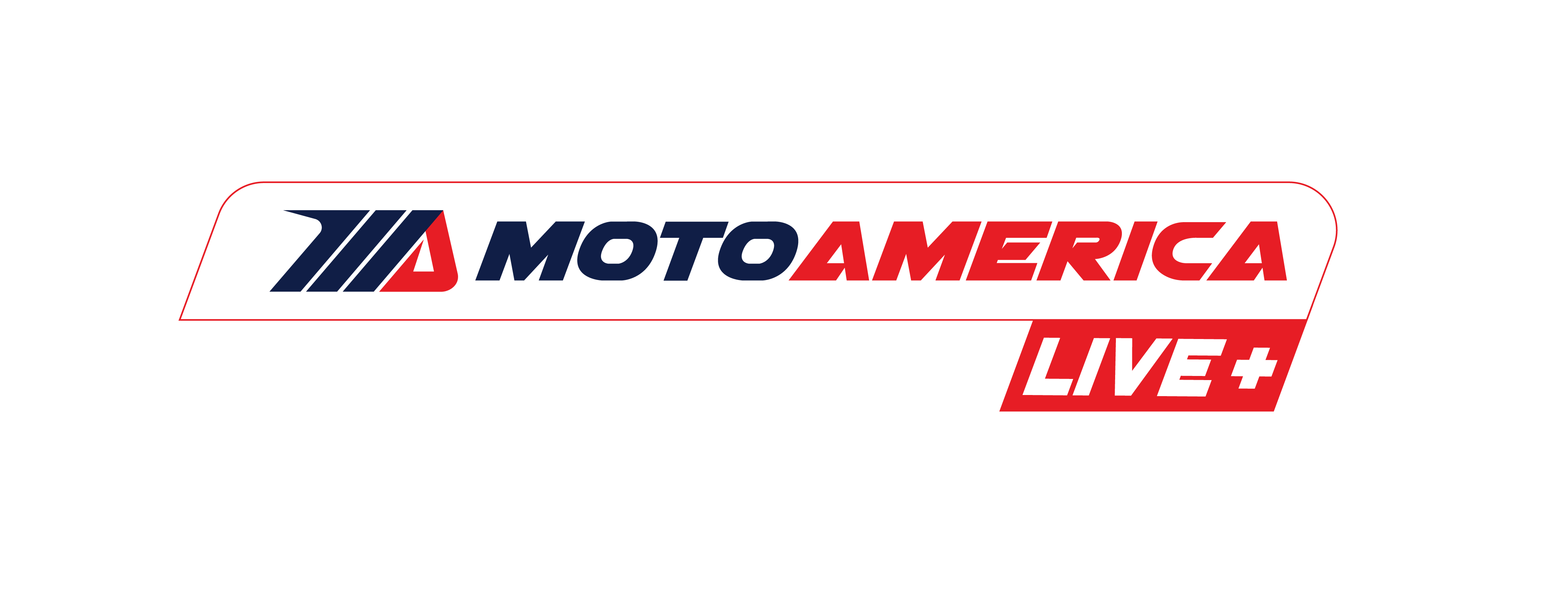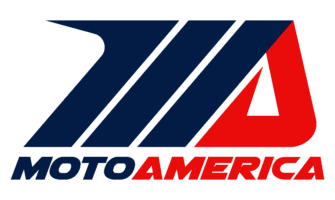
In part two of our interview with Tekk Consulting’s Jason Heard and Jack Fisher, we focus on 3D printing of motorcycle bodywork, which is something that is not only currently non-existent in MotoAmerica, it is essentially non-existent anywhere else in the world. Heard and Fisher are poised to change all that, and they gave us a peek into their crystal ball.
Earlier, you had talked about motorcycle bodywork. A lot of OEM sportbike fairings are solid plastic. They don’t really have any kind of fabric or prepreg in them whereas most racing bodywork is a little more lightweight and has fiberglass in it and/or carbon fiber prepreg. You talked about being able to 3D print motorcycle bodywork, but does it have any fiberglass or carbon fiber prepreg in it?
Jason: There are a lot of variables in that question. Jack and I consider ourselves so far down the path of finalizing a new solution that we’re within a few months of legitimately releasing it to the public. We’ve had to develop our own extrusion system and all of the cool bits around that. There’s a specific plastic that, right now, no one is actually printing with in what are known as “FDM-style” printers, which are the ones you see that have a spool. Markforged printers are that style. We use pellets…tiny, little pellets. We actually have four of our own filaments.

We have a carbon fiber-impregnated filament. We have a fiberglass-impregnated filament, which I think might be one of the more popular ones because it’s incredibly economical considering the cool stuff you can do with it. The other one that’s really cool, and this is what we call our standard filament, we don’t want to disclose what the material specifically is, but it is basically the same as the OEM plastic that you would see on a Toyota car body…stuff like that. The fourth filament that we have is a flex filament, and that’s a more flexible version of our standard filament. The other thing is, because we use a pellet-based extrusion system, how we print the material is radically different. The cost of how things can be printed is also quite a difference. There are a lot of ways that this can pan out, as far as going from “I want to print this part.”
Let’s consider racing bodywork. You could 3D print the fairing out of one of our four filaments, which would be carbon fiber, fiberglass, standard, or flex. If you print with the standard filament, you could just wrap it in vinyl. That’s most likely what race teams would end up doing because it’s very cost-effective and easy to do. Or they might do a fiberglass-based filament for the core, and then wrap it with one sheet of fiberglass. So, in other words, you’re wrapping the 3D-printed part with just one layer of something, whether it’s fiberglass, carbon fiber, Kevlar, or even vinyl.
Jack:
And you can do all of that without vacuum-bagging the parts.
Jason:
Or using a mold. No molds, none of that. We are actually changing the entire mindset of how this stuff is done because, with 3D printing, there are no constraints. In other words, because the parts are printed, their shapes don’t have to be dictated by a mold. You can be very creative with how you shape stuff and how you want to make stuff.
For example, on a road racing motorcycle, the intake and some of the mounts could actually be printed in the bodywork itself. So, that’s a whole other avenue that we’re making possible.
But, to answer your question, you could go super-quick with just a straight, simple plastic 3D print and then wrap it in vinyl. Which by the way, is impressively strong. We’ve already done this on several vehicles, including custom products that we displayed at SEMA last year. They’ve already been tested at well over 180 miles an hour. If you want the bodywork to be more complex or refined, we can go with our carbon fiber filament, and you can carbon fiber wrap the part.
We’re talking about “shells” that we’re printing. That’s basically what we’re creating is shells. These shells can be just one-millimeter thick, 1.2 millimeters, whatever. We’re talking really thin material, and then just a really thin wrap of carbon fiber or Kevlar or whatever you prefer.
Our mission with Philifi and creating these printers is to put the tools in place so that creative individuals can run with them. That’s why we’re going to offer four base filaments to start with, because we know that people are going to figure stuff out or do things with those four filaments and create different methods or create their own filaments that work for them.
Jack:
Unlike other 3D printer manufacturers, in addition to the entire printer setup, we’re also implementing a way to recycle plastics and parts that didn’t work out.
Jason:
One of the goals that Jack and I have, we’re printing these structures and Jack is actually far more versed in this than me, so a lot of this is what he has figured out. The extrusion system that we’ve put together, I don’t remember what the initial estimate was, but it’s in the range of three to four times material may get scrapped because it’s a support structure that’s printed to support your shell.
Jack:
In general, all 3D printing right now, if you want to make really complex shapes, because you’re printing one layer at a time, you have to print extra material to be able to have a shelf to deposit material onto. All that material, because it’s a wire-fed system, is scrap. There’s nothing simple the user can do to reuse it.
Jason:
You throw it away. So, this can become a huge problem really quickly, because you have potentially three to four times plastic weight that is scrapped for every part you’re printing. It doesn’t sound like a lot, but if you think about the whole industry and all of that waste created, it can get really bad really quickly.
Jack:
With Markforged, the 3D-printed material is very expensive because of the carbon fiber inside of it. You can print a part that is 10 dollars, but it might use 50 dollars’ worth of support materials to actually create it.
Jason:
I’m designing a shredder that you can put these chunks of support material into and it will shred them into granules to go back into our printer. As long as we can get above 95% material usage, with the assumption that you’re going to lose some because of spillage or whatever, as close as we can get to 100% material usage for obvious reasons would be perfect. That’s the concept.
Jack:
Obviously once you coat a part with resin and wrap it in carbon fiber or Kevlar, at that point you can’t reuse the plastic. But everything up to that point is reusable.
I used to own a very rare car that had a trim piece on it that I couldn’t get any longer. It just didn’t exist. So, I realized that that trim part was basically a mirror image of the other side of the vehicle. It was basically a little piece that went on the end of a window molding. So, about 10 years ago, I had somebody create a design from which they could 3D print the part. I ended up getting this little piece 3D printed. It cost me a ridiculous amount of money, but it was a part that didn’t exist. The thing I wasn’t completely happy about is that the part has a surface texture with a bunch of parallel lines in it, or ridges, because of it being printed. So, when you’re talking about 3D printing motorcycle bodywork, do the parts have those lines in them?
Jack:
Those lines are kind of just inherent in the process. But, the reality is that it requires very minimal finish work, and there are paint fillers available that fill all those gaps and smooth out the texture of the part.
Jason:
With our printers, we can print components faster or slower based on some resolution settings. We can turn the resolution up, and the print will be a little slower for a smoother surface. Or we can turn it down and the print will be faster, but the surface will be rougher.
In most cases, the customer expects to have to do some final finishing, whether it’s an incredibly high-end carbon fiber piece or a relatively simple fiberglass piece. It’s not perfect coming off the printer, but that little bit of imperfection is totally acceptable to the end-user.
End users just need to give their parts a light sanding, then apply a room temperature resin that we have, and then wrap the parts with their choice of material, whether it’s carbon fiber or fiberglass or Kevlar, and then resin it again. By the time you do that, it’s like a normal piece of bodywork.
But, even with that process, there are variables. Racing bodywork is consumable. You crash a bike and, of course the bodywork is done. So being able to have these teams have this sort of wide variety, I do think there’s going to be guys that run really low resolution, so you’re going to see those big lines in there.
The opposite side of that spectrum would be you print your part and the resolution will be relatively high. So then, you have significantly less-noticeable lines. Then you put on your resin, wrap it with carbon fiber, and then resin over that. That creates the gloss look that you see with normal layups. For the teams that really want the highest end of the highest end, we envision them utilizing almost all carbon fiber base material for the print, and then wrapping the component with carbon fiber. By the time it’s said and done, it looks just like any other carbon fiber component. The difference is there are no molds that have to be made, and it can be organically shaped.
I was talking to a company this year that was in the process of doing bodywork for the newer models of bikes and, for the first step, they had to create the bucks or molds. To your point, you don’t have to do that. The other thing you helped me to understand is that 3D printing truly is printing. You think back to the way computer-peripheral printers used to be, with dot matrix versus what it is now. It has to do with dots per inch or resolution, and it’s the same thing with 3D printing. Regarding that part that I had 3D printed abut 10 years ago, I never sanded it. I never painted it. It was actually pretty good as it was, so I never did any final prep work on it.
Jack:
In the past ten years, the market for small, pretty high accuracy to extremely high accuracy 3D printers has exploded. For what you probably spent to have that part 3D printed ten years ago, you could probably buy an entire printer and do it yourself now. You could print something yourself that’s probably about the same quality or even better because the entire industry has really advanced and become much more refined. It also comes back to kind of the shape of the part. With some of the printers that are now available, if the part is designed correctly, you can print it and not really see those any of those visible lines. The part looks almost like it was injection-molded instead of printed. So, the quality is getting there, but no one has done this successfully yet with really large parts. People say, “That’s great, but I don’t want to just print little trinkets if I already have a CNC mill that can machine them faster.”
Jason: To put that in perspective, the print volume of our larger printer is ten feet by five feet by four feet. We have three larger printers that we’re launching, and the motorcycle variant is actually the smallest of them. It will print an entire motorcycle front fairing, organically and all in in one shot.

When I say “organically”, what I mean is that it gives the designer far more freedom since they’re not restricted by a static mold. We’re able to create parts and structures organically since 3D printing provides a level of design freedom that never before existed.
Jack:
Every time you want to create a modified part, you’re 3D printing it from the ground up, which enables you to customize the part and give the customer exactly what they want. Creating parts in a mold won’t allow customization without having to also change the mold.
Jason:
For race teams, they can make slight variations to the bodywork depending on which racetrack they’re competing at. Let’s say, between COTA and Laguna Seca, they want to have slight variations in the air ducting or the bodywork. Traditionally, you’d have to go back to the drawing board and re-create a different mold, which just isn’t cost-effective. With 3D printing, at the click of a button, you can print out slightly revised bodywork.
Racing bodywork is actually the smallest part of the market, while the biggest part of it is bodywork for consumers’ sportbikes. Joe Consumer wants one style of bodywork on his Kawasaki Ninja and Tom Consumer wants something completely different on his. Well, with 3D printing, both consumers can get exactly what they want.
We’ve solved a whole slew of problems for which the industry currently doesn’t know that solutions exist. In other words, they’re so ingrained in normally accepted practices that what we’re referring to just blows manufacturers’ minds. That avenue alone is going to open up a whole new level of tuneability and customization with regard to bodywork, aerodynamics, etc.
If we have this conversation six months from now, it’s probably going to quite different from the conversation we’re having now. Can you talk about how quickly this the 3D printing industry is evolving?
Jason:
It’s evolving very rapidly. A good example of that was if you would have spoken with Jack and me eight months ago, we would not have had these answers. We’ve developed an extrusion system that is truly our own and that solves problems that no one else has solved yet. Even just six months ago, it didn’t even exist. Jack and I hadn’t even started on it yet and we were still just dreaming of it.
Jack:
We tried to buy one, but they didn’t exist.
If it doesn’t exist, you create it yourself, right?
Jack:
Exactly.
Jason:
One of the really cool things that we stumbled on during this process, and by “we,” I mean basically just Jack, is that the plastic that is our standard filament is something that no one else is able to print with yet. It’s not commonly available for any standard printer. You can’t go buy it. It just doesn’t exist.
We are optimizing our extrusion system to print really well with this material. It mimics the stock or OEM-style plastics that you see from Toyota, Nissan, and other automobile manufacturers. We’re figuring out how to do it efficiently, and cost-effectively.
To put that into perspective, the filament used to do the entire fairing of a Superbike is going to be under 30 bucks. It’s going to be like 22 bucks or 24 bucks, max. That’s the same plastic that OEMs are using to make their body parts. No one has been able to print with that. So that’s a good example of, just in the last six to eight months, Jack and I have worked on this stuff that didn’t even exist eight months ago. If you said, “I want to 3D print with this material,” and called any of these manufacturers, all of them would have been like, “You can’t do that. It’s not available.”
That’s amazing. It’s really moving quickly.
Jack: It’s not easy. None of this is easy to do, but it is possible.
To purchase tickets for all MotoAmerica events, click HERE
For information on how to watch the MotoAmerica Series, click HERE
For the full 2020 MotoAmerica Series schedule, click HERE








